
Tub Faucet Buying Guide
An essential part of your newly added bathtub is the tub faucet, with so many types and styles to choose from, this guide will help you choose the perfect faucet to compliment your new bathroom. Whether you’re looking to replace a bathtub faucet or purchasing one for the first time, remember to consider matching finishes, tub type, water flow rates, and accessories, including the all-important hand shower. Please continue reading to learn more about the essential tub faucet.
TYPES OF BATHTUB FAUCETS
There are many types of bathtub faucets to fit every bathroom design. Different tubs will require different faucets, so be sure to consider the tub your faucet will pair with when deciding on a style.
FREESTANDING TUB FAUCETS
These faucets stand freely and are designed for tubs that do not have pre-drilled holes. They are also referred to as floor-mounted or standalone faucets since they are tethered to the floor and hang over the edge of the tub, making them placeable wherever you want in the space. Freestanding faucets offer a great range of flexibility due to the fact they are not attached to the tub and can be placed at multiple points surrounding the tub. Make sure your home has underfloor access before deciding on a freestanding tub faucet, as the water supply lines sit below the finished floor and need enough space to be accessed. These faucets pair well with freestanding or pedestal tubs but can also be installed on clawfoot tubs.
DECK MOUNTED TUB FAUCETS
Also referred to as rim-mounted faucets, these are paired with tubs that have pre-drilled holes and are fitted on the rim (or flat surface) of the tub. The distance between the two holes varies from tub to tub, so be sure to measure the distance between the two holes center to center (center measurement). Supply lines are necessary to feed water from the supply line to the faucet itself; therefore, underfloor access is required. Be sure to look for non-bendable and rigid supply lines if you have underfloor access. If underfloor access is not an option, use flexible supply lines to connect the faucet to the water supply. These faucets work well with drop-in, clawfoot, and freestanding bathtubs.
WALL MOUNTED TUB FAUCETS
These faucets are the most traditional as they mount on the wall over the edge of the tub and keeps the deck uncluttered for a clean look. When underfloor access cannot be used, or if you own or want a tub that does not have pre-drilled faucet holes, a wall mount faucet is a perfect solution! Connected to the water supply directly behind the wall, it hides all supply lines that already exist in your home. This will help save you money if you don’t want to pay extra for water supply lines that other tub faucets may need. Wall mount tub faucets can be used with all bathtub types but are especially useful for alcove bathtubs, providing a clean and uncluttered look along the tub rim. Before installing, ensure the spout will be long enough to reach from the wall to the tub basin.
TUB WALL MOUNT FAUCETS
These bathtub faucets are designed for mounting on the inside wall of the bathtub. The pre-drilled faucet holes are typically drilled with 3-3/8" centers, but they can vary from tub to tub. It’s important to measure the distance between faucet holes before purchasing a tub wall-mounted faucet to avoid any installation headaches, but generally 3-3/8” is industry standard. Tub wall faucets can be used with a variety of bathtubs, including clawfoot, drop-in, alcove and freestanding.
ROMAN TUB FAUCETS
Typically paired with drop-in tubs and mounted to the tub surround, roman tub faucets require three holes that are drilled into the rim of the tub. If you are thinking about installing a hand shower, a fourth hole is required. Roman faucets are like deck mount tub faucets, except they come with multiple handle options to match the style of your bathroom. To use a roman tub faucet with a freestanding or clawfoot tub, you need to have a platform installed next to the bathtub.
OTHER CONSIDERATIONS
There are several things to consider when purchasing or replacing a bathtub faucet. From design features like handles and spouts to technical features like backflow preventers and thermostatic controls. Different types of bathtub faucets will have different features you may want for your bathroom reno.
FAUCET HANDLES
- Metal cross tub faucet handles are shaped like wheel spoked crosses and give the user an easy grip, even when their hands are wet.
- Lever tub faucet handles are the industry standard and most common handle type and are available in metal lever or porcelain metal lever options. These faucet types accommodate those who have a hard time grasping with their hands.
FAUCET SPOUTS
There are several types of spouts including:
- The gooseneck resembles its namesake, rising from the faucet base and then craning down into or over the tub.
- A downspout injects the water directly down out of the faucet and into the tub for faster filling. If you have a large bathtub, you may want to consider a faucet designed to fill large baths quickly like this one.
- A low spout is usually used with a hand shower and instead of exiting through the top of the faucet base, it curves out underneath and down.
BACKFLOW PREVENTER
These usually sit beneath the faucet through the tub’s sidewall, and the plumbing is attached to the tub drain as well. This prevents the tub from overflowing if it is overfilled or the water rises when a person enters the water.
HAND SHOWER
Many of our bathroom faucets are paired with a hand shower, which rests in a cradle and is attached to the faucet. These handy faucet features serve as an alternative to a standard overhead shower and feature a 4’ or 5’ hose, which makes rinsing off a breeze. Use the hand shower when you clean the tub, or when bathing children or pets.
THERMOSTATIC TEMPERATURE CONTROL
Thermostatic temperature control maintains the water temperature by regulating fluctuations in temperature. Rather than having separate hot and cold valves, the two are mixed and can be adjusted to the perfect temperature. Think of it like your home thermostat, warmer one way and cooler the other so you can find the right balance for your daily bath.
CLAWFOOT SHOWER ENCLOSURE
A shower enclosure easily allows you to add a shower to your existing clawfoot or freestanding bathtub. The hand shower is replaced with a riser pipe for the overhead shower, and most shower conversion kits include a two-way diverter to have the best of both worlds, keeping the hand shower attached! You can learn more about shower enclosures by reading our Shower Enclosure Buying Guide.
FREQUENTLY ASKED QUESTIONS (FAQ)
WHAT IS THE DIFFERENCE BETWEEN A SINK FAUCET AND A BATHTUB FAUCET?
Remember this as you search for your tub faucet, sink faucets and tub faucets are not interchangeable. They are completely different systems. Each type of faucet is built for a different task. Bathtub faucets have larger flow rates compared to sink faucets.
HOW DO I CLEAN MY TUB FAUCET?
For regular cleaning, we recommend using a mixture of dishwashing liquid and water, about 1 or 2 tablespoons per 2 cups of warm water. Using a gentle washrag, clean along the entire surface of the faucet and its attachments using a gentle circular motion.
Use white vinegar in a plastic bag to remove lime from stainless steel, chrome, and other protected services by attaching the bag with a rubber band around the spout. Remove after an hour, turn the faucet on to clean out any sediment and leftover vinegar, then wipe clean with a dry cloth. For any bronze or brass finishes, clean using only water and wipe clean.
Although these steps are how you can generally clean a tub faucet, we recommend using the manufacturer’s cleaning instructions to ensure you do not damage your new fixtures.

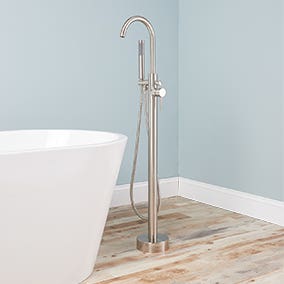
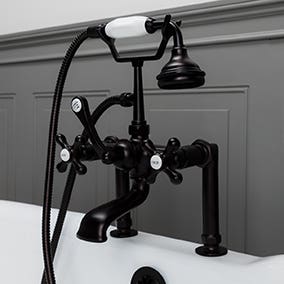
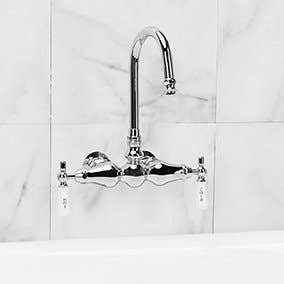
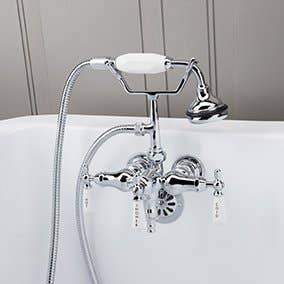
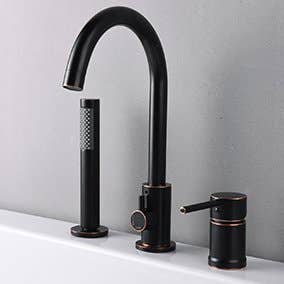
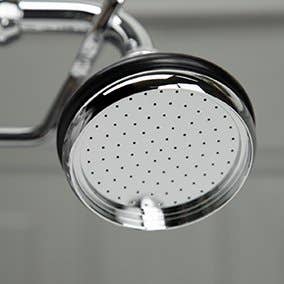
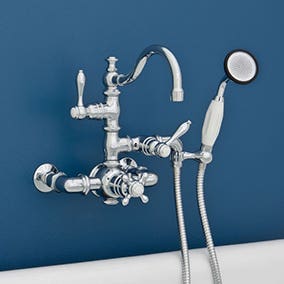

Login and Registration Form